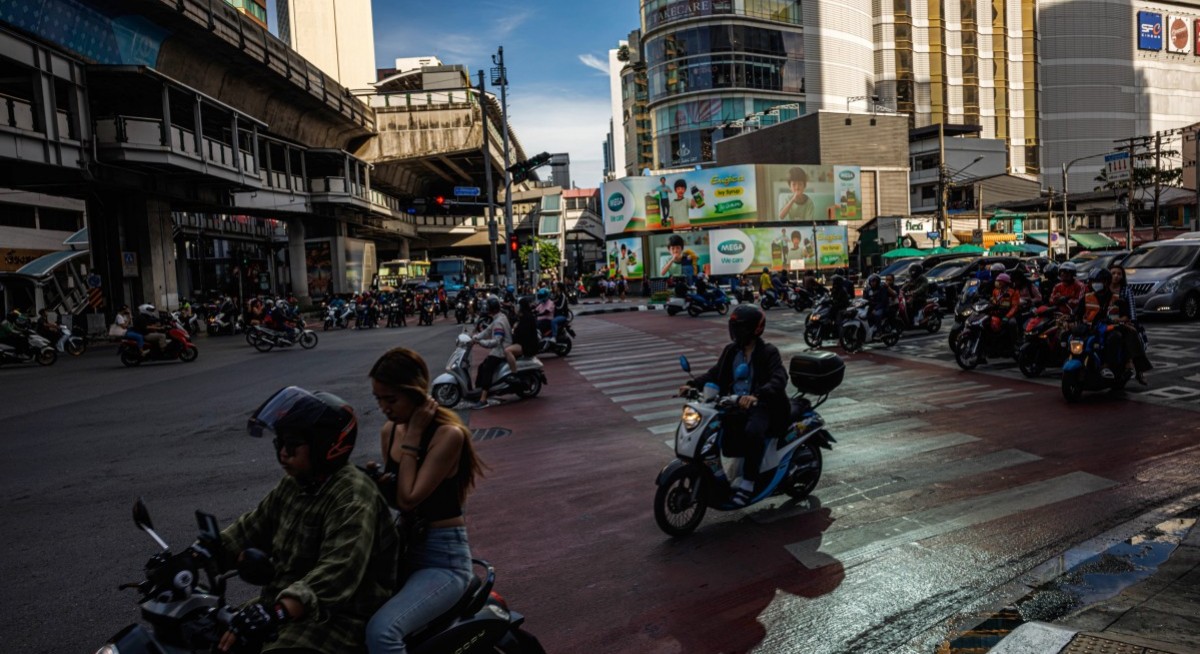The baht (THB) was little changed at 32.44 to the US dollar (US$) after the data, which showed that exports had countered a weak domestic economic performance. Thailand’s benchmark SET Index fell 0.3%, headed for its third straight day of losses.
The Southeast Asian nation is bracing for a potentially prolonged bout of economic weakness, thanks to the recently imposed 19% tariff on shipments to the US, its biggest export market. Tourism has also faltered, while sentiment hasn’t been helped by a bout of domestic political instability which has seen the prime minister suspended from office. There were also recent, deadly border clashes with Cambodia.
Frontloading goods
See also: Sumitomo Mitsui Financial Group accelerates India expansion after US$5 bil buying blitz
Like other Asian economies in the first half of 2025, Thailand appears to have benefited from the frontloading of exports ahead of President Donald Trump’s tariffs. But even though its 19% levy is in line with that of most Southeast Asian nations, NESDC chief Danucha Pichayanan said Thailand risks losing out to its neighbors.
“The impact of US tariffs is the biggest challenge for the Thai economy,” Danucha at a briefing in Bangkok. “We are still facing a risk of losing market share in some products. Our effective tax rate is still higher in some products. So, we need to adjust ourselves.”
Thailand is likely to retain its market share in rice, rubber, motorcycles and raw materials for pet food, but could lose sales in telephones, hard disk drives, machinery and auto parts, the NESDC said.
See also: French inflation unexpectedly holds steady as Spain stays strong
The Thai economy grew 3% in the first six months of 2025, and Danucha said the economy can still grow in the second half, but the pace won’t be as high as 2%-3%.
“The Thai economy has structural problems, so it’s hard for us to have high growth at our potential level of around 3%,” Danucha said, cautioning that efforts to restructure the economy are taking time. “The US tariffs may help accelerate our economic reform.”
The council’s call for reform echoes concerns among analysts.
Moody’s warning
“Thailand’s growth potential is likely to weaken further as limited progress on long-term reforms, domestic political uncertainty and heightened global trade instability compound deep-rooted structural issues,” Moody’s Ratings said in a report last week. “The weakening economic outlook will curb scope for fiscal consolidation amid tepid revenue growth and little room for additional spending cuts.”
Danucha said the recent border conflict with Cambodia is unlikely to have a major impact on the economy, as the affected areas are not significant industrial zones. And Cambodian workers who have left Thailand can be replaced by staff from other countries, he said.
But the council now expects only 4 million Chinese tourist arrivals this year, down from a 6 million forecast, as Chinese travelers opt for other destinations such as Japan.
To stay ahead of Singapore and the region’s corporate and economic trends, click here for Latest Section
The economy grew 0.6% from the first quarter, beating the 0.5% forecast. The government tweaked its 2025 outlook to a range of 1.8% to 2.3% from 1.3% to 2.3%, effectively lifting the midpoint from 1.8% to 2%.
Political situation
Those estimates don’t take into account the domestic political situation, according to the council, which noted that the 2026 budget has almost been finalised.
The Bank of Thailand last week cut the nation’s benchmark rate for the fourth time since October to help support the fragile economy. Monday’s data showed continued domestic weakness.
What Bloomberg Economics Says...
The milder-than-expected slowdown in Thailand’s GDP growth in the second quarter doesn’t mean the Bank of Thailand is finished easing. With tourism slumping, the climate for investment weak, the front-loading boost to exports poised to end, and US tariffs set to bite harder, we expect the BOT to cut its key rate by 25 basis points to 1.25% at its next meeting in October.
— Tamara Mast Henderson, Asean economist
“Export of goods continued to grow favuorably, while private investment returned to expansion,” the council said in a statement. “Meanwhile, private consumption expenditure, government consumption expenditure, public investment, and export of services decelerated.”
The nation’s biggest private sector group earlier this month raised its 2025 growth forecast to 1.8% - 2.2% after Thailand secured the 19% US levy, which is lower than the earlier threatened 36%. Still, it warned that intense price competition, a strong baht and the slowdown in tourism could weigh on the economy in the second half of the year.




